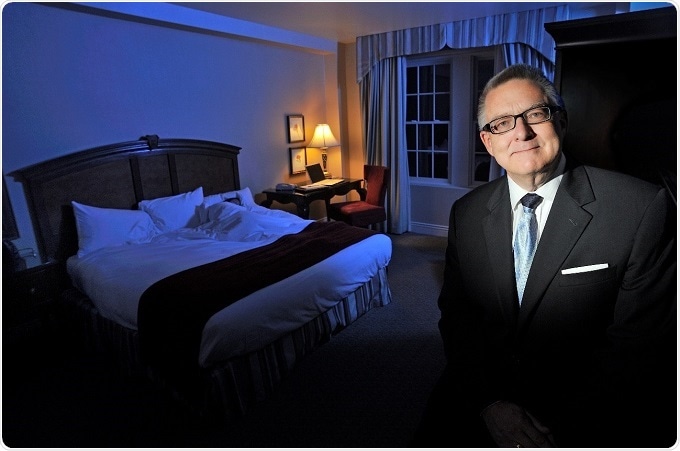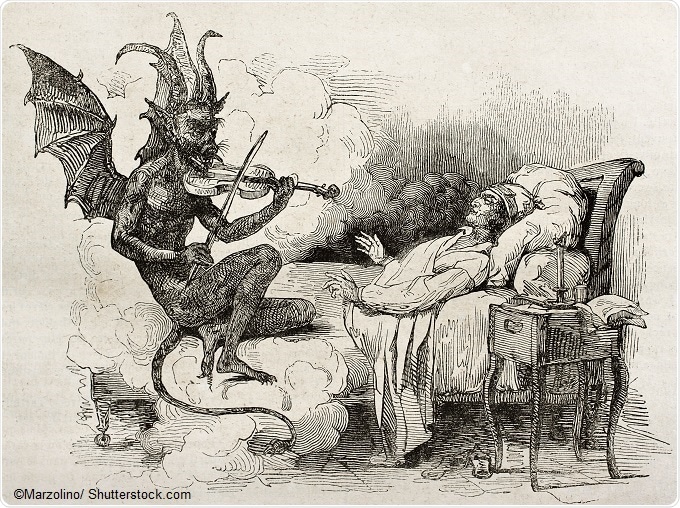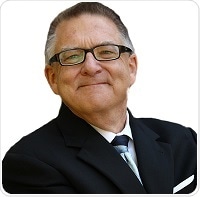An interview with Professor Roger Ekirch, Virginia Polytechnic Institute and State University, conducted by April Cashin-Garbutt, MA (Cantab)
Is it true that we used to sleep in two phases: first sleep and second sleep?
Absolutely, the evidence for which is voluminous. Arguably from time immemorial to the nineteenth century, the dominant pattern of sleep in Western societies was biphasic, whereby most preindustrial households retired between 9 and 10pm, slept for 3 to 3 ½ hours during their “first sleep,” awakened after midnight for an hour or so, during which individuals did practically anything and everything imaginable before taking a “second sleep,” roughly until dawn.

How far back does the evidence extend for this biphasic pattern of sleep?
The earliest reference I have found is in Homer’s Odyssey, written in either the late eighth or early seventh century B.C. A much longer reference appears in Virgil’s Aeneid, nor were these the only classical writers to refer to this biphasic pattern of sleep - among others, Thucydides, Livy, and Apuleius.
When did it become commonplace to consolidate these two phases into a compressed single sleep and why did this change occur?
The transformation over the course of the nineteenth century in Europe and the United States was protracted and erratic for technological and cultural reasons, both a product in large measure of the Industrial Revolution.
Most important was the growing prevalence of artificial illumination, first gas, followed later by electric lighting. Not until the early twentieth century, with the lingering exception of remote rural areas, would seamless slumber be perceived as utterly normal.
How much evidence is there documenting the evolution of sleep patterns over this period?
A small mountain of material in English thanks to commercial databases containing vast storehouses of newspapers, periodicals, scientific publications, and literature, all of which are keyword searchable. What might still seem time-consuming takes a matter of months rather than several lifetimes.
As I tell my students working on research papers, we are still looking for needles in haystacks but we are now blessed with extraordinarily powerful magnets in the form of search engines able to canvass thousands of pages of historical evidence.
_680x_-_Morphart_Creation.jpg)
The Sleep of a girl, After kind of study by Moreau the Younger, engraved illustration. Magasin Pittoresque (1882).
Have anthropological studies found segmented sleep patterns in any indigenous cultures?
Incontestably. The most current introduction to this is my piece, “Segmented Sleep in Preindustrial Societies,” in the March 2016 issue of the journal Sleep. On virtually every continent, save for Antarctica, there is evidence of biphasic sleep among preindustrial cultures.
What remains unresolved is whether this form of slumber has been as dominant as it once was in the Western world.
How did the increasing prevalence of artificial light affect sleep patterns?
In all likelihood in two ways. Over the eighteenth-century, progress in urban lighting in Europe and America, fuelled by oil from the whaling trade, had rapidly accelerated, only to be followed in 1807 by the introduction of gas streetlights in London.
By 1823, nearly forty thousand lamps lit more than two hundred miles of the city’s streets. In the United States, three hundred municipalities boasted street lamps by 1860.
Advances in illumination quickly followed in businesses and well-to-do households. Light from a lone gas mantle proved twelve times as strong as that from a candle or oil lamp, whereas light from a single electric bulb, by the close of the nineteenth century, was one hundred times more powerful.
To begin with, while this radical transformation in lighting resulted in later urban bedtimes, it brought no evident change in rising time (typically around dawn). Many adults likely felt more fatigued than had previous generations upon retiring at night. With their drive to sleep heightened, they probably slept continuously for a longer duration and more soundly.
Modern advocates of ‘sleep restriction therapy,’ as I understand it, emphasize the importance of compression to the promotion of slow-wave sleep at the expense of other lighter, less efficient forms, such as REM sleep.
In essence, heightened sleep propensity, according to this theory, probably enhanced the quality of slumber, thereby rendering the loss of a second sleep during the nineteenth century more acceptable.
Still, more important, not only did the expansion of artificial lighting expand night’s waking hours, but it also had another, even more fundamental consequence. Of the impact of light – or, in turn, its absence – on sleep, there is wide scientific agreement.
Sleep propensity is extremely sensitive to artificial light, or, in turn, its absence. ‘Every time we turn on a light’, the sleep scientist Dr. Charles Czeisler has remarked, ‘we are inadvertently taking a drug that affects how we will sleep’.
Just a few hours of exposure to artificial illumination, received via photoreceptors in the retinas of our eyes, can reset the circadian pacemaker.
Located at the base of the brain, the pacemaker is a tiny body of cells, the size of a grain of rice, that controls the flow of hormones and changes in body functions that have daily rhythms.
Among other consequences are fluctuations in levels of the brain hormone melatonin, the chemical central to the sleep-wake cycle that is suppressed by light.
Produced by the pineal gland, melatonin signals to the human body the arrival of darkness and helps to induce sleep. At night, ‘when the pacemaker ‘expects’ darkness’, Charles Czeisler has written, exposure to light ‘has the most profound resetting effect’.
What do you think the future holds for our sleep patterns?
Given modern improvements in combatting insects (bedbugs, lice, and fleas), the weather, noise, and, most of all, illness and pain, our sleep today should never have been better.

Tartini dream old illustration: Famous composer and violinist of the Republic of Venice. Created by J. Boilly after Boilly father, published on Magasin Pittoresque, Paris, 1840.
No longer are we anxious, like our forbears, over the perils posed at night by fire, burglars, and witches. As an historian, I am not in the prediction business, nor am I a scientist. That said, the present trajectory suggests that our sleep will remain consolidated.
As for its quality, barring the public consumption of drugs, such as the U.S. military is developing to keep soldiers awake for days on end, what the future has in store is up to each and every one of us.
Currently, many of us seem determined to cheat ourselves of sufficient sleep given our high-wattage lifestyles. The irony is that the less time we allot to sleep, the more demanding we become that it be satisfying.
A consequence of this quixotic quest in pursuit of the perfect night’s sleep is that individuals rush to the medicine cabinet and buy exorbitantly priced mattresses (thus buttressing what has been termed the “sleep industrial complex”) – to be followed by relying on highly caffeinated “power beverages” and, if we have the opportunity, naps to get through the day.
Where can readers find more information?
For my latest contribution to the history and transformation of segmented sleep, please see “The Modernization of Western Sleep: Or, Does Insomnia Have a History?” Past and Present (February 2015), 149-192. Further information can be found on my website under the heading “Sleep Research” at https://www.vt.edu/
About Professor Roger Ekirch
 Roger Ekirch is an award-winning author of five books and a professor of history at Virginia Tech. His writing has been translated into eight languages.
Roger Ekirch is an award-winning author of five books and a professor of history at Virginia Tech. His writing has been translated into eight languages.
Although early America remain his teaching interest, his research has ranged widely to include European as well as American history - even the history of sleep, which he probed, most notably, in At Day’s Close: Night in Times Past (W.W. Norton, 2005), a panoramic study of nocturnal culture before the Industrial Revolution, now in its eighth printing, and the recipient of four prizes.
His most recent book, American Sanctuary: Mutiny, Martyrdom, and National Identity in the Age of Revolution, was published in February 2017 by Pantheon, an imprint of Alfred A. Knopf.
In addition to numerous scholarly articles his writing has appeared in the New York Times, Harper’s Magazine, the Huffington Post, Smithsonian Magazine, and the Wall Street Journal, for which he is a regular book reviewer.
Prof. Ekirch has been interviewed on the BBC, CBC, “Morning Edition,” “Talk of the Nation,” “On Point,” and “Weekend Edition,” as well as on “BBC One,” “Book TV,” “The History Channel,” PBS’s “Points of View,” Canadian Public Television, and the BBC's "One Show.”
Meanwhile, his path-breaking work uncovering the history of “segmented sleep” has revamped traditional assumptions about normal human slumber. A member of the editorial board of Sleep Health: The Journal of the National Sleep Foundation, he has given frequent keynote addresses to medical gatherings.
In an article in Scientific American Mind, Walter A. Brown, M.D. of Brown University Medical School marvelled, “The source of this new assault on conventional thinking comes not from a drug company or a university research program but from a historian.”
His sleep scholarship has also inspired art exhibitions at the Galleria Raucci Santamaria in Naples, the Virginia Museum of Fine Arts, and the Bonniers Konsthall Museum of Contemporary Art in Stockholm During Prof. Ekirch’s career, he has received four fellowships from the National Endowment for the Humanities, and in 1981-1982 he became the first Paul Mellon Fellow at Cambridge University, where he taught in the Faculty of History and resided as a Fellow Commoner at Peterhouse. In 1998, he was awarded a Guggenheim Foundation fellowship.
Prof. Ekirch was born in Washington, D.C. He graduated cum laude with highest distinction in history from Dartmouth College. 1972. Obtaining his M.A. and Ph.D. degrees from Johns Hopkins University, he arrived at Virginia Tech in 1977. He and his family make their home on Sugarloaf Mountain in Roanoke County.